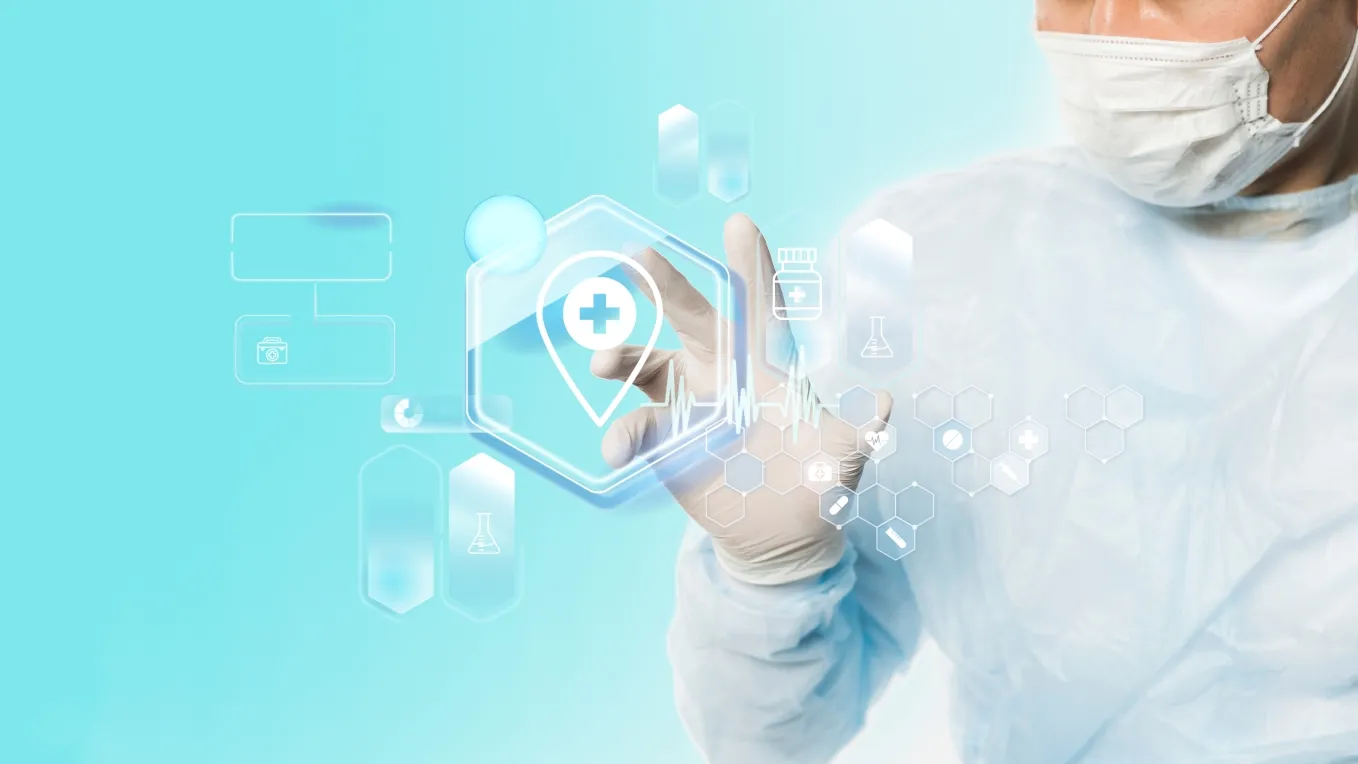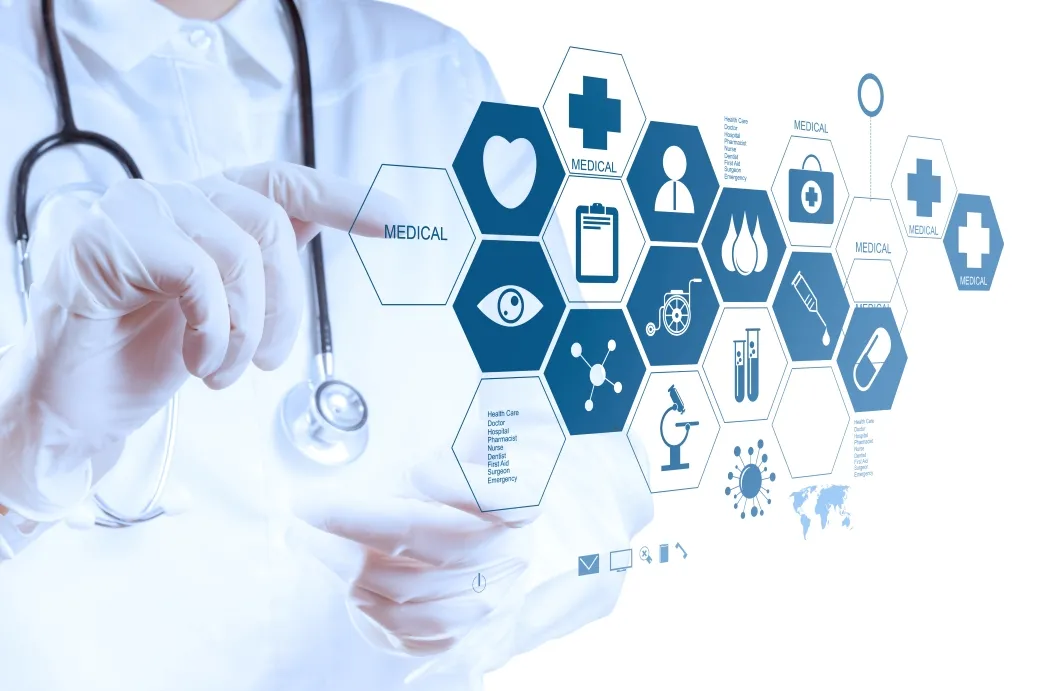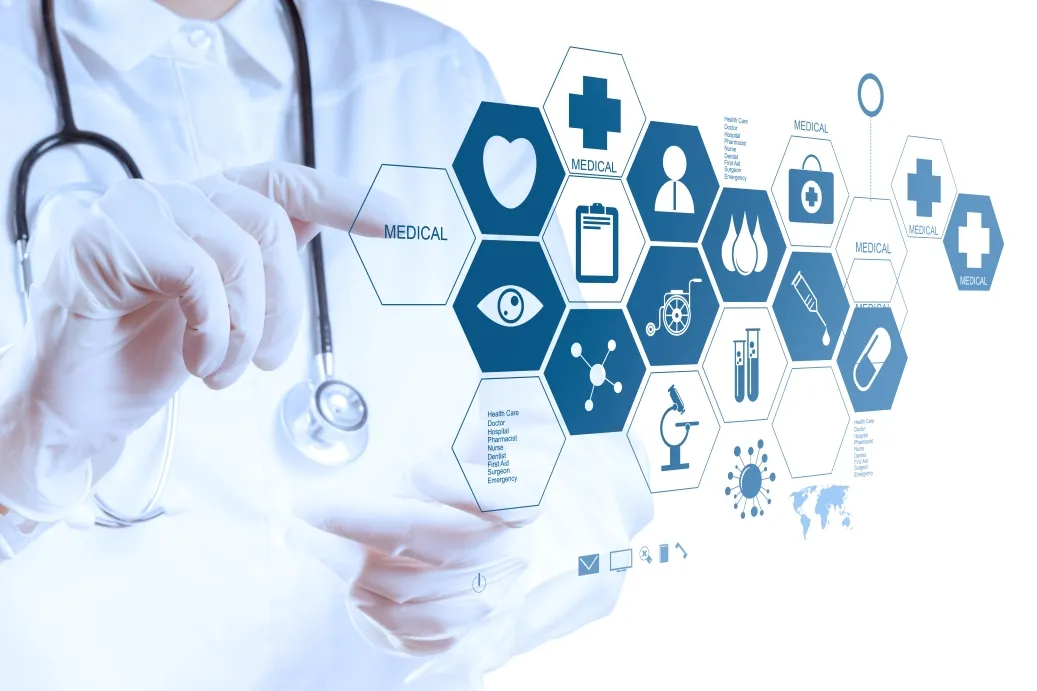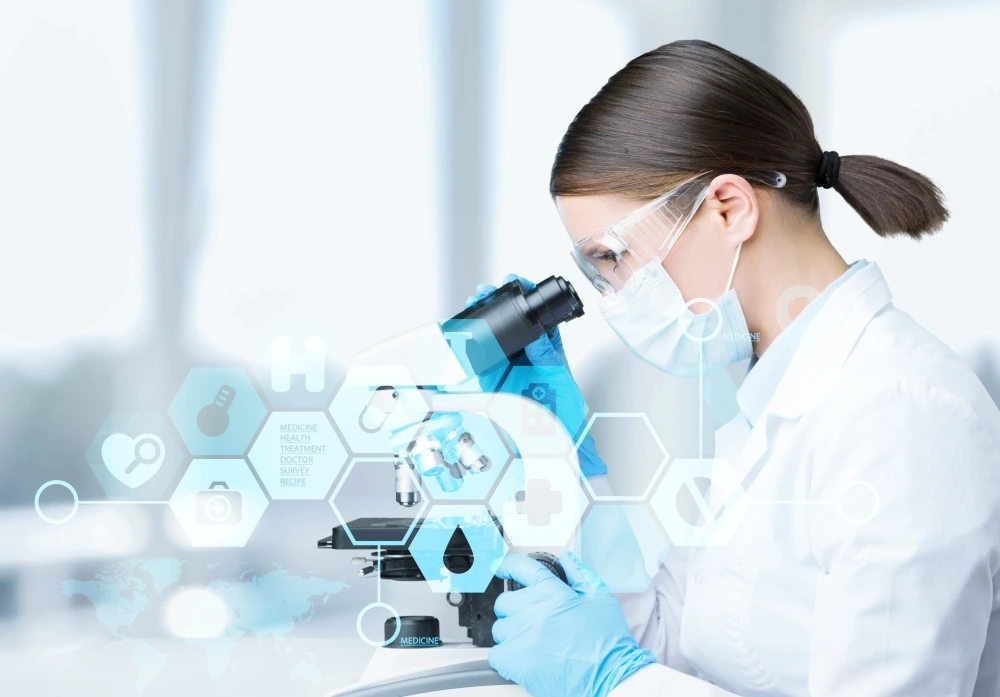Plasminogen Market 2025: Key Trends, Innovations, and Growth Outlook
Plasminogen plays a crucial role in the human body’s natural ability to dissolve blood clots, acting as the inactive precursor to plasmin—an enzyme essential for fibrinolysis. As cardiovascular and thrombotic disorders become more prevalent worldwide, the demand for effective plasminogen therapies continues to rise. The global Plasminogen Market is expected to witness significant growth by 2025, fueled by advances in biotechnology, increasing disease incidence, and expanding healthcare infrastructure.
Key Market Drivers
- Rising Incidence of Thrombotic Disorders
The growing prevalence of cardiovascular diseases such as deep vein thrombosis, pulmonary embolism, and ischemic stroke directly boosts demand for plasminogen-based treatments. Lifestyle changes, aging populations, and chronic conditions like diabetes increase susceptibility to clot formation, intensifying the need for advanced therapies. - Advances in Recombinant Technology
Biotechnological advancements have led to the development of recombinant plasminogen products with enhanced purity, safety, and efficacy compared to traditional plasma-derived therapies. These recombinant forms reduce the risk of contamination and immunogenicity, making them highly attractive to healthcare providers. - Enhanced Healthcare Access and Awareness
Expanding healthcare infrastructure globally, coupled with increasing awareness campaigns on clot-related diseases, is improving early diagnosis and treatment rates. Patient education on the importance of timely intervention further propels the adoption of plasminogen therapies. - Government Support and Reimbursement Policies
Favorable policies promoting biopharmaceutical research and reimbursement for innovative treatments are encouraging market growth, especially in developed economies. Investment in healthcare systems and regulatory approvals for advanced biologics also support market expansion.
Innovations Shaping the Plasminogen Market
- Next-Generation Recombinant Plasminogen
The shift from plasma-derived products to recombinant plasminogen marks a major innovation. Recombinant therapies provide consistent quality, scalability, and a safer profile, overcoming limitations of earlier formulations. - Targeted Drug Delivery Systems
Researchers are developing sophisticated delivery platforms such as nanoparticles and conjugated molecules to improve plasminogen’s bioavailability and therapeutic precision. These targeted systems minimize systemic exposure and reduce adverse effects, enhancing patient safety. - Combination Therapies
Combining plasminogen with anticoagulants or anti-inflammatory agents is under exploration to tackle complex clotting disorders more effectively. Such multi-modal approaches aim to optimize treatment outcomes and personalize therapy. - Advanced Diagnostics and Monitoring
Innovations in biomarkers and imaging technologies allow for early detection of thrombotic events and real-time monitoring of plasminogen activity. This integration helps clinicians tailor therapies based on patient-specific conditions, improving success rates. - Integration of Digital Health Tools
Artificial intelligence and remote monitoring solutions are increasingly incorporated to predict thrombotic risks and manage therapy adherence, enhancing overall patient care.
Regional Market Dynamics
- North America
Dominating the market, North America benefits from strong healthcare infrastructure, cutting-edge biopharmaceutical R&D, and streamlined regulatory pathways. High cardiovascular disease rates and significant healthcare spending make it a key region for plasminogen adoption. - Europe
Europe follows closely, driven by comprehensive cardiovascular health initiatives, strong regulatory standards, and growing investment in personalized medicine. Cross-border collaborations in research and healthcare innovation boost market growth. - Asia-Pacific
Asia-Pacific represents the fastest-growing market due to rising disease prevalence, expanding healthcare access, and government focus on non-communicable diseases. Countries like China, India, and Japan are witnessing increased clinical research and adoption of plasminogen therapies. - Latin America, Middle East & Africa
These regions are gradually expanding their healthcare capabilities. Improved disease awareness, healthcare funding, and international partnerships are enabling steady market growth despite regulatory and infrastructural challenges.
Strategic Considerations for Industry Players
- Investment in R&D: Focusing on developing recombinant plasminogen products with superior safety and delivery technologies will be crucial to staying competitive.
- Regulatory Compliance: Navigating diverse regional regulations efficiently can speed up market entry and broaden geographic reach.
- Awareness Programs: Educating healthcare providers and patients about the benefits of plasminogen therapies can increase adoption rates.
- Strategic Partnerships: Collaborating with healthcare systems, biotech firms, and distributors enhances distribution channels and market penetration.
- Digital Integration: Leveraging digital health platforms for patient monitoring and predictive analytics can differentiate product offerings.
Conclusion
The Plasminogen Market 2025 is poised for robust growth, driven by rising thrombotic disease burdens, technological breakthroughs, and expanding healthcare frameworks worldwide. Continuous innovation in recombinant therapies, delivery systems, and diagnostics is reshaping treatment paradigms for clot-related disorders.
Understanding regional market dynamics and strategically addressing regulatory, educational, and technological challenges will be key to capitalizing on emerging opportunities. With a patient-centric focus and integrated approach, the plasminogen market is set to play an increasingly vital role in cardiovascular healthcare, improving outcomes for millions globally.
NOTE:
Quants and Trends is proud to offer an extensive portfolio of meticulously researched healthcare market reports, numbering in the thousands. We also provide tailored customization services to ensure our insights align precisely with your strategic objectives and informational needs. For personalized assistance or to discuss your specific requirements, we invite you to get in touch with our team. We also encourage you to request a complimentary sample PDF report. Please visit our Sample Request Page to receive yours today.
Key Market Players
Kedrion
Prometic
Genentech (Roche)
Boehringer Ingelheim
Kyowa Hakko Kirin
Omeros Corporation
Segmentation By Type
Intravenous Injection
Eye Drops
Segmentation By Application
Ligneous Conjunctivitis
Diabetic Foot
Wound Healing
Others
Segmentation By Region
North America (United States, Canada and Mexico)
Europe (Germany, France, United Kingdom, Russia, Italy, and Rest of Europe)
Asia-Pacific (China, Japan, Korea, India, Southeast Asia, and Australia)
South America (Brazil, Argentina, Colombia, and Rest of South America)
Middle East & Africa (Saudi Arabia, UAE, Egypt, South Africa, and Rest of Middle East & Africa)
Market SWOT Analysis
What are the strengths of the Plasminogen market in 2025?
The Plasminogen market benefits from growing awareness about rare diseases like plasminogen deficiency. With advancements in biotechnology, there are increased opportunities for novel plasminogen-based therapies, fostering growth. Strong investments from pharmaceutical companies are also driving research and development in this area.
What weaknesses exist in the Plasminogen market in 2025?
The Plasminogen market faces challenges such as the high cost of treatments and limited accessibility in low-resource regions. Additionally, there is a lack of widespread awareness and diagnostic tools for plasminogen-related conditions, which could hinder early detection and treatment.
What opportunities exist for the Plasminogen market in 2025?
The increasing focus on personalized medicine offers significant growth opportunities. Emerging markets in Asia and Latin America also present opportunities due to the rising demand for advanced healthcare. There is potential for expanding the market with new plasminogen formulations and therapies tailored to different patient needs.
What threats could impact the Plasminogen market in 2025?
Regulatory hurdles, especially around new drug approvals, pose potential risks. Competitive therapies from other biotechnology firms could limit market share. Additionally, concerns about the cost-effectiveness of plasminogen treatments, especially in developing regions, might slow market expansion.
Market PESTEL Analysis
How do political factors affect the Plasminogen market in 2025?
Political factors, such as government regulations around drug approval and healthcare policies, play a significant role in the Plasminogen market. Any changes in health policy or funding for rare disease treatments could impact market growth. Stability in healthcare policies in key markets is essential for the continued development and distribution of plasminogen therapies.
What economic factors influence the Plasminogen market in 2025?
Economic factors like healthcare expenditure, insurance coverage, and patient affordability impact the plasminogen market. High treatment costs can limit market access, especially in developing countries. Economic downturns can also lead to reduced funding for research, delaying the development of new therapies.
How does society impact the Plasminogen market in 2025?
Social awareness and increasing patient advocacy for rare diseases are pushing for more research and better access to plasminogen treatments. Social acceptance of advanced biotechnology therapies will encourage adoption. However, cultural attitudes toward expensive treatments may hinder wider acceptance in some regions.
What technological factors are driving the Plasminogen market in 2025?
Technological advancements in biotechnology and genetic research are crucial for developing innovative plasminogen therapies. Enhanced diagnostic tools for plasminogen-related conditions and the growth of personalized medicine will increase the market's potential. Advances in drug delivery systems also promise to improve treatment outcomes.
What environmental factors could influence the Plasminogen market in 2025?
Environmental factors have less direct influence, but sustainability practices in drug manufacturing and the ecological footprint of biologic therapies are gaining attention. Companies in the market may need to consider environmental regulations and green technologies to meet sustainability goals.
How do legal factors impact the Plasminogen market in 2025?
Legal factors, including intellectual property laws, patent protections, and regulatory requirements, significantly affect the Plasminogen market. Stringent regulations for new drug approvals and the patenting of innovative treatments can either boost or limit market growth. Legal challenges related to biosimilar products may also create competition for established plasminogen therapies.
Market SIPOC Analysis
Who are the suppliers in the Plasminogen market in 2025?
Suppliers in the Plasminogen market include biotechnology and pharmaceutical companies that develop and manufacture plasminogen-based therapies. These suppliers also include raw material providers for biotechnology products, research institutions, and contract research organizations that contribute to the R&D process.
What are the inputs in the Plasminogen market in 2025?
The inputs include the scientific research and clinical trials necessary for developing plasminogen therapies, as well as the raw materials required for production, such as recombinant proteins and other biotechnology components. Investments in R&D and collaboration with healthcare institutions also play a key role.
What are the processes in the Plasminogen market in 2025?
Key processes in the market include the development of plasminogen therapies through clinical trials, regulatory approval procedures, manufacturing, distribution, and post-market surveillance. Research into new formulations and patient-targeted treatment protocols is also part of the ongoing process.
Who are the customers in the Plasminogen market in 2025?
Customers include healthcare providers, hospitals, clinics, and patients with plasminogen deficiencies or related conditions. Insurance companies and government health programs also play an essential role by funding treatments and therapies.
What are the outputs in the Plasminogen market in 2025?
Outputs consist of approved plasminogen-based therapies and treatments, both in the form of recombinant plasminogen and related biotechnological products. These outputs contribute to improved patient outcomes and quality of life, addressing both rare diseases and broader healthcare needs.
Market Porter's Five Forces
What is the threat of new entrants in the Plasminogen market in 2025?
The threat of new entrants is moderate. High research and development costs, regulatory hurdles, and the need for specialized knowledge in biotechnology limit the entry of new players. However, emerging biotech startups with innovative approaches may still pose a challenge to established companies.
How intense is the bargaining power of suppliers in the Plasminogen market in 2025?
The bargaining power of suppliers is moderate to high. The production of plasminogen therapies relies on specialized raw materials and advanced technology, making suppliers of key components somewhat powerful. However, the increasing number of suppliers in biotechnology may reduce their individual influence over time.
What is the bargaining power of buyers in the Plasminogen market in 2025?
The bargaining power of buyers is moderate. Since plasminogen therapies are specialized and used for rare conditions, there are fewer treatment options, giving suppliers some leverage. However, healthcare providers and insurance companies can exert pressure to control costs and demand better pricing.
How high is the threat of substitute products in the Plasminogen market in 2025?
The threat of substitutes is low to moderate. While alternative therapies may exist for managing symptoms of plasminogen deficiency, no direct substitutes are available for plasminogen replacement therapy. However, advances in gene therapy or other biotechnology innovations may pose a future threat.
How competitive is the Plasminogen market in 2025?
The competition in the Plasminogen market is moderate. The market is driven by a few key players focused on rare disease treatments, but there is potential for new competitors with innovative therapies. Companies must focus on research, development, and pricing strategies to maintain their competitive edge.
Market Upstream Analysis
What are the key raw materials required in the Plasminogen market in 2025?
Key raw materials include biological agents, enzymes, and recombinant DNA technologies essential for producing plasminogen therapies. Additionally, high-quality reagents and cell cultures are required for research and production.
Who are the key suppliers in the upstream process of the Plasminogen market in 2025?
Key suppliers include biotechnology companies that provide the necessary enzymes, plasmids, and cell lines for production. Research institutions and contract manufacturing organizations (CMOs) also play a vital role in the upstream process, supporting the development and scalability of plasminogen-based therapies.
What are the challenges faced in the upstream process of the Plasminogen market in 2025?
Challenges in the upstream process include the high cost of raw materials, complexities in scaling up production, and the need for stringent quality control in biological manufacturing. Additionally, regulatory requirements for the use of biologics can complicate the upstream processes, especially in new markets.
How does research and development impact the upstream process in the Plasminogen market in 2025?
Research and development are crucial to the upstream process, as they drive the discovery of new therapeutic approaches, improve production efficiency, and ensure compliance with regulatory standards. Ongoing R&D in genetic engineering and bioprocessing technologies will improve yields and cost-efficiency in plasminogen production.
What technological innovations are affecting the upstream process in the Plasminogen market in 2025?
Technological innovations such as gene editing, cell culture optimization, and advanced protein expression systems are enhancing the upstream process. These technologies help increase the yield and purity of plasminogen products, improving overall production efficiency and reducing costs in the long term.
Market Midstream Analysis
What are the key processes in the midstream phase of the Plasminogen market in 2025?
Key processes in the midstream phase include the formulation and purification of plasminogen therapies. This phase also involves the packaging, labeling, and compliance with regulatory standards for distribution. The development of delivery systems that ensure effective treatment for patients is also a critical aspect.
Who are the main players involved in the midstream process of the Plasminogen market in 2025?
Main players in the midstream process include contract manufacturing organizations (CMOs) and biotech companies responsible for the production and formulation of plasminogen therapies. Distribution companies and regulatory agencies also play an essential role in ensuring the products meet safety and efficacy standards.
What are the challenges in the midstream phase of the Plasminogen market in 2025?
Challenges include maintaining consistency and quality control during the formulation and manufacturing process, as biological therapies are complex. Additionally, adhering to global regulatory standards, managing production scalability, and meeting market demand for rare disease treatments can complicate the midstream process.
How do regulatory requirements impact the midstream process in the Plasminogen market in 2025?
Regulatory requirements are crucial in the midstream process as they ensure the safety, quality, and efficacy of plasminogen therapies. Navigating these requirements, including clinical trial regulations and approval procedures, can delay product availability and increase costs. Compliance with varying standards across regions adds to the complexity.
What role does innovation play in the midstream phase of the Plasminogen market in 2025?
Innovation plays a significant role in improving the efficiency of the formulation, purification, and delivery of plasminogen therapies. Technological advances in automated production systems, stability improvements, and patient-friendly delivery methods help reduce costs and enhance the effectiveness of treatments during this phase.
Market Downstream Analysis
What are the key activities in the downstream phase of the Plasminogen market in 2025?
Key activities in the downstream phase include distribution, marketing, sales, and post-market surveillance. These activities ensure that plasminogen therapies reach healthcare providers and patients while maintaining product safety and effectiveness after launch.
Who are the main stakeholders in the downstream process of the Plasminogen market in 2025?
Main stakeholders include pharmaceutical distributors, healthcare providers, hospitals, clinics, insurance companies, and patients. Regulatory agencies also continue to oversee the market to ensure compliance with treatment guidelines and safety standards.
What are the challenges in the downstream phase of the Plasminogen market in 2025?
Challenges include ensuring wide access to treatments, particularly in underdeveloped regions, and managing the high costs of rare disease treatments. There are also barriers to awareness and education regarding plasminogen deficiency, which can delay diagnosis and treatment initiation.
How does the reimbursement landscape affect the downstream process in the Plasminogen market in 2025?
The reimbursement landscape plays a crucial role in determining patient access to plasminogen therapies. Limited reimbursement for rare disease treatments and high out-of-pocket costs for patients could hinder market growth and restrict access to therapies, especially in regions with less robust healthcare systems.
How does competition influence the downstream process in the Plasminogen market in 2025?
Competition is moderate, with a few key players focusing on plasminogen therapies. As more treatments become available, marketing strategies and pricing will become increasingly important in influencing market share. Additionally, competition from alternative therapies, such as gene therapy, could impact demand for traditional plasminogen treatments.
Chapter 1, to describe Plasminogen product scope, market overview, market estimation caveats and base year.
Chapter 2, to profile the top manufacturers of Plasminogen, with price, sales, revenue and global market share of Plasminogen from 2018 to 2023.
Chapter 3, the Plasminogen competitive situation, sales quantity, revenue and global market share of top manufacturers are analyzed emphatically by landscape contrast.
Chapter 4, the Plasminogen breakdown data are shown at the regional level, to show the sales quantity, consumption value and growth by regions, from 2018 to 2029.
Chapter 5 and 6, to segment the sales by Type and application, with sales market share and growth rate by type, application, from 2018 to 2029.
Chapter 7, 8, 9, 10 and 11, to break the sales data at the country level, with sales quantity, consumption value and market share for key countries in the world, from 2017 to 2022.and Plasminogen market forecast, by regions, type and application, with sales and revenue, from 2024 to 2029.
Chapter 12, market dynamics, drivers, restraints, trends, Porters Five Forces analysis, and Influence of COVID-19 and Russia-Ukraine War.
Chapter 13, the key raw materials and key suppliers, and industry chain of Plasminogen.
Chapter 14 and 15, to describe Plasminogen sales channel, distributors, customers, research findings and conclusion.
1 Market Overview
1.1 Product Overview and Scope of Plasminogen
1.2 Market Estimation Caveats and Base Year
1.3 Market Analysis by Type
1.3.1 Overview: Global Plasminogen Consumption Value by Type: 2018 Versus 2022 Versus 2029
1.3.2 Intravenous Injection
1.3.3 Eye Drops
1.4 Market Analysis by Application
1.4.1 Overview: Global Plasminogen Consumption Value by Application: 2018 Versus 2022 Versus 2029
1.4.2 Ligneous Conjunctivitis
1.4.3 Diabetic Foot
1.4.4 Wound Healing
1.4.5 Others
1.5 Global Plasminogen Market Size & Forecast
1.5.1 Global Plasminogen Consumption Value (2018 & 2022 & 2029)
1.5.2 Global Plasminogen Sales Quantity (2018-2029)
1.5.3 Global Plasminogen Average Price (2018-2029)
2 Manufacturers Profiles
2.1 Kedrion
2.1.1 Kedrion Details
2.1.2 Kedrion Major Business
2.1.3 Kedrion Plasminogen Product and Services
2.1.4 Kedrion Plasminogen Sales Quantity, Average Price, Revenue, Gross Margin and Market Share (2018-2023)
2.1.5 Kedrion Recent Developments/Updates
2.2 Prometic
2.2.1 Prometic Details
2.2.2 Prometic Major Business
2.2.3 Prometic Plasminogen Product and Services
2.2.4 Prometic Plasminogen Sales Quantity, Average Price, Revenue, Gross Margin and Market Share (2018-2023)
2.2.5 Prometic Recent Developments/Updates
2.3 Genentech (Roche)
2.3.1 Genentech (Roche) Details
2.3.2 Genentech (Roche) Major Business
2.3.3 Genentech (Roche) Plasminogen Product and Services
2.3.4 Genentech (Roche) Plasminogen Sales Quantity, Average Price, Revenue, Gross Margin and Market Share (2018-2023)
2.3.5 Genentech (Roche) Recent Developments/Updates
2.4 Boehringer Ingelheim
2.4.1 Boehringer Ingelheim Details
2.4.2 Boehringer Ingelheim Major Business
2.4.3 Boehringer Ingelheim Plasminogen Product and Services
2.4.4 Boehringer Ingelheim Plasminogen Sales Quantity, Average Price, Revenue, Gross Margin and Market Share (2018-2023)
2.4.5 Boehringer Ingelheim Recent Developments/Updates
2.5 Kyowa Hakko Kirin
2.5.1 Kyowa Hakko Kirin Details
2.5.2 Kyowa Hakko Kirin Major Business
2.5.3 Kyowa Hakko Kirin Plasminogen Product and Services
2.5.4 Kyowa Hakko Kirin Plasminogen Sales Quantity, Average Price, Revenue, Gross Margin and Market Share (2018-2023)
2.5.5 Kyowa Hakko Kirin Recent Developments/Updates
2.6 Omeros Corporation
2.6.1 Omeros Corporation Details
2.6.2 Omeros Corporation Major Business
2.6.3 Omeros Corporation Plasminogen Product and Services
2.6.4 Omeros Corporation Plasminogen Sales Quantity, Average Price, Revenue, Gross Margin and Market Share (2018-2023)
2.6.5 Omeros Corporation Recent Developments/Updates
3 Competitive Environment: Plasminogen by Manufacturer
3.1 Global Plasminogen Sales Quantity by Manufacturer (2018-2023)
3.2 Global Plasminogen Revenue by Manufacturer (2018-2023)
3.3 Global Plasminogen Average Price by Manufacturer (2018-2023)
3.4 Market Share Analysis (2022)
3.4.1 Producer Shipments of Plasminogen by Manufacturer Revenue ($MM) and Market Share (%): 2022
3.4.2 Top 3 Plasminogen Manufacturer Market Share in 2022
3.4.2 Top 6 Plasminogen Manufacturer Market Share in 2022
3.5 Plasminogen Market: Overall Company Footprint Analysis
3.5.1 Plasminogen Market: Region Footprint
3.5.2 Plasminogen Market: Company Product Type Footprint
3.5.3 Plasminogen Market: Company Product Application Footprint
3.6 New Market Entrants and Barriers to Market Entry
3.7 Mergers, Acquisition, Agreements, and Collaborations
4 Consumption Analysis by Region
4.1 Global Plasminogen Market Size by Region
4.1.1 Global Plasminogen Sales Quantity by Region (2018-2029)
4.1.2 Global Plasminogen Consumption Value by Region (2018-2029)
4.1.3 Global Plasminogen Average Price by Region (2018-2029)
4.2 North America Plasminogen Consumption Value (2018-2029)
4.3 Europe Plasminogen Consumption Value (2018-2029)
4.4 Asia-Pacific Plasminogen Consumption Value (2018-2029)
4.5 South America Plasminogen Consumption Value (2018-2029)
4.6 Middle East and Africa Plasminogen Consumption Value (2018-2029)
5 Market Segment by Type
5.1 Global Plasminogen Sales Quantity by Type (2018-2029)
5.2 Global Plasminogen Consumption Value by Type (2018-2029)
5.3 Global Plasminogen Average Price by Type (2018-2029)
6 Market Segment by Application
6.1 Global Plasminogen Sales Quantity by Application (2018-2029)
6.2 Global Plasminogen Consumption Value by Application (2018-2029)
6.3 Global Plasminogen Average Price by Application (2018-2029)
7 North America
7.1 North America Plasminogen Sales Quantity by Type (2018-2029)
7.2 North America Plasminogen Sales Quantity by Application (2018-2029)
7.3 North America Plasminogen Market Size by Country
7.3.1 North America Plasminogen Sales Quantity by Country (2018-2029)
7.3.2 North America Plasminogen Consumption Value by Country (2018-2029)
7.3.3 United States Market Size and Forecast (2018-2029)
7.3.4 Canada Market Size and Forecast (2018-2029)
7.3.5 Mexico Market Size and Forecast (2018-2029)
8 Europe
8.1 Europe Plasminogen Sales Quantity by Type (2018-2029)
8.2 Europe Plasminogen Sales Quantity by Application (2018-2029)
8.3 Europe Plasminogen Market Size by Country
8.3.1 Europe Plasminogen Sales Quantity by Country (2018-2029)
8.3.2 Europe Plasminogen Consumption Value by Country (2018-2029)
8.3.3 Germany Market Size and Forecast (2018-2029)
8.3.4 France Market Size and Forecast (2018-2029)
8.3.5 United Kingdom Market Size and Forecast (2018-2029)
8.3.6 Russia Market Size and Forecast (2018-2029)
8.3.7 Italy Market Size and Forecast (2018-2029)
9 Asia-Pacific
9.1 Asia-Pacific Plasminogen Sales Quantity by Type (2018-2029)
9.2 Asia-Pacific Plasminogen Sales Quantity by Application (2018-2029)
9.3 Asia-Pacific Plasminogen Market Size by Region
9.3.1 Asia-Pacific Plasminogen Sales Quantity by Region (2018-2029)
9.3.2 Asia-Pacific Plasminogen Consumption Value by Region (2018-2029)
9.3.3 China Market Size and Forecast (2018-2029)
9.3.4 Japan Market Size and Forecast (2018-2029)
9.3.5 Korea Market Size and Forecast (2018-2029)
9.3.6 India Market Size and Forecast (2018-2029)
9.3.7 Southeast Asia Market Size and Forecast (2018-2029)
9.3.8 Australia Market Size and Forecast (2018-2029)
10 South America
10.1 South America Plasminogen Sales Quantity by Type (2018-2029)
10.2 South America Plasminogen Sales Quantity by Application (2018-2029)
10.3 South America Plasminogen Market Size by Country
10.3.1 South America Plasminogen Sales Quantity by Country (2018-2029)
10.3.2 South America Plasminogen Consumption Value by Country (2018-2029)
10.3.3 Brazil Market Size and Forecast (2018-2029)
10.3.4 Argentina Market Size and Forecast (2018-2029)
11 Middle East & Africa
11.1 Middle East & Africa Plasminogen Sales Quantity by Type (2018-2029)
11.2 Middle East & Africa Plasminogen Sales Quantity by Application (2018-2029)
11.3 Middle East & Africa Plasminogen Market Size by Country
11.3.1 Middle East & Africa Plasminogen Sales Quantity by Country (2018-2029)
11.3.2 Middle East & Africa Plasminogen Consumption Value by Country (2018-2029)
11.3.3 Turkey Market Size and Forecast (2018-2029)
11.3.4 Egypt Market Size and Forecast (2018-2029)
11.3.5 Saudi Arabia Market Size and Forecast (2018-2029)
11.3.6 South Africa Market Size and Forecast (2018-2029)
12 Market Dynamics
12.1 Plasminogen Market Drivers
12.2 Plasminogen Market Restraints
12.3 Plasminogen Trends Analysis
12.4 Porters Five Forces Analysis
12.4.1 Threat of New Entrants
12.4.2 Bargaining Power of Suppliers
12.4.3 Bargaining Power of Buyers
12.4.4 Threat of Substitutes
12.4.5 Competitive Rivalry
12.5 Influence of COVID-19 and Russia-Ukraine War
12.5.1 Influence of COVID-19
12.5.2 Influence of Russia-Ukraine War
13 Raw Material and Industry Chain
13.1 Raw Material of Plasminogen and Key Manufacturers
13.2 Manufacturing Costs Percentage of Plasminogen
13.3 Plasminogen Production Process
13.4 Plasminogen Industrial Chain
14 Shipments by Distribution Channel
14.1 Sales Channel
14.1.1 Direct to End-User
14.1.2 Distributors
14.2 Plasminogen Typical Distributors
14.3 Plasminogen Typical Customers
15 Research Findings and Conclusion
16 Appendix
16.1 Methodology
16.2 Research Process and Data Source
16.3 Disclaimer
List of Tables
Table 1. Global Plasminogen Consumption Value by Type, (USD Million), 2018 & 2022 & 2029
Table 2. Global Plasminogen Consumption Value by Application, (USD Million), 2018 & 2022 & 2029
Table 3. Kedrion Basic Information, Manufacturing Base and Competitors
Table 4. Kedrion Major Business
Table 5. Kedrion Plasminogen Product and Services
Table 6. Kedrion Plasminogen Sales Quantity (K Units), Average Price (USD/Unit), Revenue (USD Million), Gross Margin and Market Share (2018-2023)
Table 7. Kedrion Recent Developments/Updates
Table 8. Prometic Basic Information, Manufacturing Base and Competitors
Table 9. Prometic Major Business
Table 10. Prometic Plasminogen Product and Services
Table 11. Prometic Plasminogen Sales Quantity (K Units), Average Price (USD/Unit), Revenue (USD Million), Gross Margin and Market Share (2018-2023)
Table 12. Prometic Recent Developments/Updates
Table 13. Genentech (Roche) Basic Information, Manufacturing Base and Competitors
Table 14. Genentech (Roche) Major Business
Table 15. Genentech (Roche) Plasminogen Product and Services
Table 16. Genentech (Roche) Plasminogen Sales Quantity (K Units), Average Price (USD/Unit), Revenue (USD Million), Gross Margin and Market Share (2018-2023)
Table 17. Genentech (Roche) Recent Developments/Updates
Table 18. Boehringer Ingelheim Basic Information, Manufacturing Base and Competitors
Table 19. Boehringer Ingelheim Major Business
Table 20. Boehringer Ingelheim Plasminogen Product and Services
Table 21. Boehringer Ingelheim Plasminogen Sales Quantity (K Units), Average Price (USD/Unit), Revenue (USD Million), Gross Margin and Market Share (2018-2023)
Table 22. Boehringer Ingelheim Recent Developments/Updates
Table 23. Kyowa Hakko Kirin Basic Information, Manufacturing Base and Competitors
Table 24. Kyowa Hakko Kirin Major Business
Table 25. Kyowa Hakko Kirin Plasminogen Product and Services
Table 26. Kyowa Hakko Kirin Plasminogen Sales Quantity (K Units), Average Price (USD/Unit), Revenue (USD Million), Gross Margin and Market Share (2018-2023)
Table 27. Kyowa Hakko Kirin Recent Developments/Updates
Table 28. Omeros Corporation Basic Information, Manufacturing Base and Competitors
Table 29. Omeros Corporation Major Business
Table 30. Omeros Corporation Plasminogen Product and Services
Table 31. Omeros Corporation Plasminogen Sales Quantity (K Units), Average Price (USD/Unit), Revenue (USD Million), Gross Margin and Market Share (2018-2023)
Table 32. Omeros Corporation Recent Developments/Updates
Table 33. Global Plasminogen Sales Quantity by Manufacturer (2018-2023) & (K Units)
Table 34. Global Plasminogen Revenue by Manufacturer (2018-2023) & (USD Million)
Table 35. Global Plasminogen Average Price by Manufacturer (2018-2023) & (USD/Unit)
Table 36. Market Position of Manufacturers in Plasminogen, (Tier 1, Tier 2, and Tier 3), Based on Consumption Value in 2022
Table 37. Head Office and Plasminogen Production Site of Key Manufacturer
Table 38. Plasminogen Market: Company Product Type Footprint
Table 39. Plasminogen Market: Company Product Application Footprint
Table 40. Plasminogen New Market Entrants and Barriers to Market Entry
Table 41. Plasminogen Mergers, Acquisition, Agreements, and Collaborations
Table 42. Global Plasminogen Sales Quantity by Region (2018-2023) & (K Units)
Table 43. Global Plasminogen Sales Quantity by Region (2024-2029) & (K Units)
Table 44. Global Plasminogen Consumption Value by Region (2018-2023) & (USD Million)
Table 45. Global Plasminogen Consumption Value by Region (2024-2029) & (USD Million)
Table 46. Global Plasminogen Average Price by Region (2018-2023) & (USD/Unit)
Table 47. Global Plasminogen Average Price by Region (2024-2029) & (USD/Unit)
Table 48. Global Plasminogen Sales Quantity by Type (2018-2023) & (K Units)
Table 49. Global Plasminogen Sales Quantity by Type (2024-2029) & (K Units)
Table 50. Global Plasminogen Consumption Value by Type (2018-2023) & (USD Million)
Table 51. Global Plasminogen Consumption Value by Type (2024-2029) & (USD Million)
Table 52. Global Plasminogen Average Price by Type (2018-2023) & (USD/Unit)
Table 53. Global Plasminogen Average Price by Type (2024-2029) & (USD/Unit)
Table 54. Global Plasminogen Sales Quantity by Application (2018-2023) & (K Units)
Table 55. Global Plasminogen Sales Quantity by Application (2024-2029) & (K Units)
Table 56. Global Plasminogen Consumption Value by Application (2018-2023) & (USD Million)
Table 57. Global Plasminogen Consumption Value by Application (2024-2029) & (USD Million)
Table 58. Global Plasminogen Average Price by Application (2018-2023) & (USD/Unit)
Table 59. Global Plasminogen Average Price by Application (2024-2029) & (USD/Unit)
Table 60. North America Plasminogen Sales Quantity by Type (2018-2023) & (K Units)
Table 61. North America Plasminogen Sales Quantity by Type (2024-2029) & (K Units)
Table 62. North America Plasminogen Sales Quantity by Application (2018-2023) & (K Units)
Table 63. North America Plasminogen Sales Quantity by Application (2024-2029) & (K Units)
Table 64. North America Plasminogen Sales Quantity by Country (2018-2023) & (K Units)
Table 65. North America Plasminogen Sales Quantity by Country (2024-2029) & (K Units)
Table 66. North America Plasminogen Consumption Value by Country (2018-2023) & (USD Million)
Table 67. North America Plasminogen Consumption Value by Country (2024-2029) & (USD Million)
Table 68. Europe Plasminogen Sales Quantity by Type (2018-2023) & (K Units)
Table 69. Europe Plasminogen Sales Quantity by Type (2024-2029) & (K Units)
Table 70. Europe Plasminogen Sales Quantity by Application (2018-2023) & (K Units)
Table 71. Europe Plasminogen Sales Quantity by Application (2024-2029) & (K Units)
Table 72. Europe Plasminogen Sales Quantity by Country (2018-2023) & (K Units)
Table 73. Europe Plasminogen Sales Quantity by Country (2024-2029) & (K Units)
Table 74. Europe Plasminogen Consumption Value by Country (2018-2023) & (USD Million)
Table 75. Europe Plasminogen Consumption Value by Country (2024-2029) & (USD Million)
Table 76. Asia-Pacific Plasminogen Sales Quantity by Type (2018-2023) & (K Units)
Table 77. Asia-Pacific Plasminogen Sales Quantity by Type (2024-2029) & (K Units)
Table 78. Asia-Pacific Plasminogen Sales Quantity by Application (2018-2023) & (K Units)
Table 79. Asia-Pacific Plasminogen Sales Quantity by Application (2024-2029) & (K Units)
Table 80. Asia-Pacific Plasminogen Sales Quantity by Region (2018-2023) & (K Units)
Table 81. Asia-Pacific Plasminogen Sales Quantity by Region (2024-2029) & (K Units)
Table 82. Asia-Pacific Plasminogen Consumption Value by Region (2018-2023) & (USD Million)
Table 83. Asia-Pacific Plasminogen Consumption Value by Region (2024-2029) & (USD Million)
Table 84. South America Plasminogen Sales Quantity by Type (2018-2023) & (K Units)
Table 85. South America Plasminogen Sales Quantity by Type (2024-2029) & (K Units)
Table 86. South America Plasminogen Sales Quantity by Application (2018-2023) & (K Units)
Table 87. South America Plasminogen Sales Quantity by Application (2024-2029) & (K Units)
Table 88. South America Plasminogen Sales Quantity by Country (2018-2023) & (K Units)
Table 89. South America Plasminogen Sales Quantity by Country (2024-2029) & (K Units)
Table 90. South America Plasminogen Consumption Value by Country (2018-2023) & (USD Million)
Table 91. South America Plasminogen Consumption Value by Country (2024-2029) & (USD Million)
Table 92. Middle East & Africa Plasminogen Sales Quantity by Type (2018-2023) & (K Units)
Table 93. Middle East & Africa Plasminogen Sales Quantity by Type (2024-2029) & (K Units)
Table 94. Middle East & Africa Plasminogen Sales Quantity by Application (2018-2023) & (K Units)
Table 95. Middle East & Africa Plasminogen Sales Quantity by Application (2024-2029) & (K Units)
Table 96. Middle East & Africa Plasminogen Sales Quantity by Region (2018-2023) & (K Units)
Table 97. Middle East & Africa Plasminogen Sales Quantity by Region (2024-2029) & (K Units)
Table 98. Middle East & Africa Plasminogen Consumption Value by Region (2018-2023) & (USD Million)
Table 99. Middle East & Africa Plasminogen Consumption Value by Region (2024-2029) & (USD Million)
Table 100. Plasminogen Raw Material
Table 101. Key Manufacturers of Plasminogen Raw Materials
Table 102. Plasminogen Typical Distributors
Table 103. Plasminogen Typical Customers
List of Figures
Figure 1. Plasminogen Picture
Figure 2. Global Plasminogen Consumption Value by Type, (USD Million), 2018 & 2022 & 2029
Figure 3. Global Plasminogen Consumption Value Market Share by Type in 2022
Figure 4. Intravenous Injection Examples
Figure 5. Eye Drops Examples
Figure 6. Global Plasminogen Consumption Value by Application, (USD Million), 2018 & 2022 & 2029
Figure 7. Global Plasminogen Consumption Value Market Share by Application in 2022
Figure 8. Ligneous Conjunctivitis Examples
Figure 9. Diabetic Foot Examples
Figure 10. Wound Healing Examples
Figure 11. Others Examples
Figure 12. Global Plasminogen Consumption Value, (USD Million): 2018 & 2022 & 2029
Figure 13. Global Plasminogen Consumption Value and Forecast (2018-2029) & (USD Million)
Figure 14. Global Plasminogen Sales Quantity (2018-2029) & (K Units)
Figure 15. Global Plasminogen Average Price (2018-2029) & (USD/Unit)
Figure 16. Global Plasminogen Sales Quantity Market Share by Manufacturer in 2022
Figure 17. Global Plasminogen Consumption Value Market Share by Manufacturer in 2022
Figure 18. Producer Shipments of Plasminogen by Manufacturer Sales Quantity ($MM) and Market Share (%): 2021
Figure 19. Top 3 Plasminogen Manufacturer (Consumption Value) Market Share in 2022
Figure 20. Top 6 Plasminogen Manufacturer (Consumption Value) Market Share in 2022
Figure 21. Global Plasminogen Sales Quantity Market Share by Region (2018-2029)
Figure 22. Global Plasminogen Consumption Value Market Share by Region (2018-2029)
Figure 23. North America Plasminogen Consumption Value (2018-2029) & (USD Million)
Figure 24. Europe Plasminogen Consumption Value (2018-2029) & (USD Million)
Figure 25. Asia-Pacific Plasminogen Consumption Value (2018-2029) & (USD Million)
Figure 26. South America Plasminogen Consumption Value (2018-2029) & (USD Million)
Figure 27. Middle East & Africa Plasminogen Consumption Value (2018-2029) & (USD Million)
Figure 28. Global Plasminogen Sales Quantity Market Share by Type (2018-2029)
Figure 29. Global Plasminogen Consumption Value Market Share by Type (2018-2029)
Figure 30. Global Plasminogen Average Price by Type (2018-2029) & (USD/Unit)
Figure 31. Global Plasminogen Sales Quantity Market Share by Application (2018-2029)
Figure 32. Global Plasminogen Consumption Value Market Share by Application (2018-2029)
Figure 33. Global Plasminogen Average Price by Application (2018-2029) & (USD/Unit)
Figure 34. North America Plasminogen Sales Quantity Market Share by Type (2018-2029)
Figure 35. North America Plasminogen Sales Quantity Market Share by Application (2018-2029)
Figure 36. North America Plasminogen Sales Quantity Market Share by Country (2018-2029)
Figure 37. North America Plasminogen Consumption Value Market Share by Country (2018-2029)
Figure 38. United States Plasminogen Consumption Value and Growth Rate (2018-2029) & (USD Million)
Figure 39. Canada Plasminogen Consumption Value and Growth Rate (2018-2029) & (USD Million)
Figure 40. Mexico Plasminogen Consumption Value and Growth Rate (2018-2029) & (USD Million)
Figure 41. Europe Plasminogen Sales Quantity Market Share by Type (2018-2029)
Figure 42. Europe Plasminogen Sales Quantity Market Share by Application (2018-2029)
Figure 43. Europe Plasminogen Sales Quantity Market Share by Country (2018-2029)
Figure 44. Europe Plasminogen Consumption Value Market Share by Country (2018-2029)
Figure 45. Germany Plasminogen Consumption Value and Growth Rate (2018-2029) & (USD Million)
Figure 46. France Plasminogen Consumption Value and Growth Rate (2018-2029) & (USD Million)
Figure 47. United Kingdom Plasminogen Consumption Value and Growth Rate (2018-2029) & (USD Million)
Figure 48. Russia Plasminogen Consumption Value and Growth Rate (2018-2029) & (USD Million)
Figure 49. Italy Plasminogen Consumption Value and Growth Rate (2018-2029) & (USD Million)
Figure 50. Asia-Pacific Plasminogen Sales Quantity Market Share by Type (2018-2029)
Figure 51. Asia-Pacific Plasminogen Sales Quantity Market Share by Application (2018-2029)
Figure 52. Asia-Pacific Plasminogen Sales Quantity Market Share by Region (2018-2029)
Figure 53. Asia-Pacific Plasminogen Consumption Value Market Share by Region (2018-2029)
Figure 54. China Plasminogen Consumption Value and Growth Rate (2018-2029) & (USD Million)
Figure 55. Japan Plasminogen Consumption Value and Growth Rate (2018-2029) & (USD Million)
Figure 56. Korea Plasminogen Consumption Value and Growth Rate (2018-2029) & (USD Million)
Figure 57. India Plasminogen Consumption Value and Growth Rate (2018-2029) & (USD Million)
Figure 58. Southeast Asia Plasminogen Consumption Value and Growth Rate (2018-2029) & (USD Million)
Figure 59. Australia Plasminogen Consumption Value and Growth Rate (2018-2029) & (USD Million)
Figure 60. South America Plasminogen Sales Quantity Market Share by Type (2018-2029)
Figure 61. South America Plasminogen Sales Quantity Market Share by Application (2018-2029)
Figure 62. South America Plasminogen Sales Quantity Market Share by Country (2018-2029)
Figure 63. South America Plasminogen Consumption Value Market Share by Country (2018-2029)
Figure 64. Brazil Plasminogen Consumption Value and Growth Rate (2018-2029) & (USD Million)
Figure 65. Argentina Plasminogen Consumption Value and Growth Rate (2018-2029) & (USD Million)
Figure 66. Middle East & Africa Plasminogen Sales Quantity Market Share by Type (2018-2029)
Figure 67. Middle East & Africa Plasminogen Sales Quantity Market Share by Application (2018-2029)
Figure 68. Middle East & Africa Plasminogen Sales Quantity Market Share by Region (2018-2029)
Figure 69. Middle East & Africa Plasminogen Consumption Value Market Share by Region (2018-2029)
Figure 70. Turkey Plasminogen Consumption Value and Growth Rate (2018-2029) & (USD Million)
Figure 71. Egypt Plasminogen Consumption Value and Growth Rate (2018-2029) & (USD Million)
Figure 72. Saudi Arabia Plasminogen Consumption Value and Growth Rate (2018-2029) & (USD Million)
Figure 73. South Africa Plasminogen Consumption Value and Growth Rate (2018-2029) & (USD Million)
Figure 74. Plasminogen Market Drivers
Figure 75. Plasminogen Market Restraints
Figure 76. Plasminogen Market Trends
Figure 77. Porters Five Forces Analysis
Figure 78. Manufacturing Cost Structure Analysis of Plasminogen in 2022
Figure 79. Manufacturing Process Analysis of Plasminogen
Figure 80. Plasminogen Industrial Chain
Figure 81. Sales Quantity Channel: Direct to End-User vs Distributors
Figure 82. Direct Channel Pros & Cons
Figure 83. Indirect Channel Pros & Cons
Figure 84. Methodology
Figure 85. Research Process and Data Source











